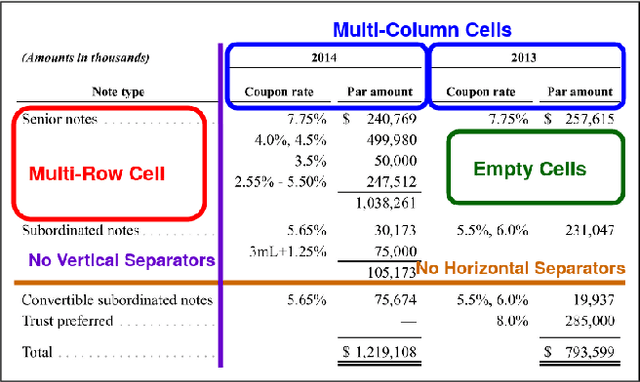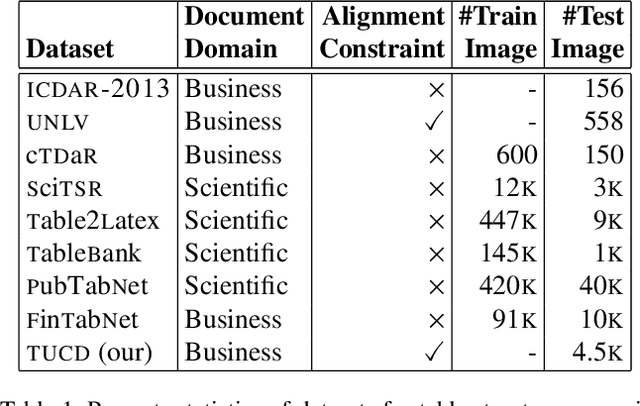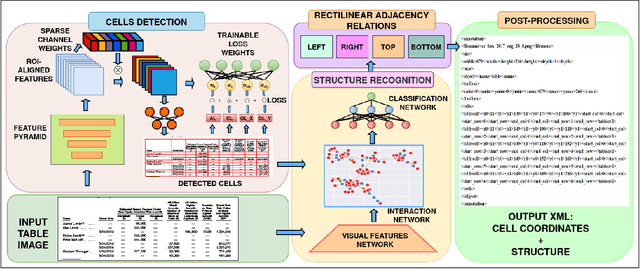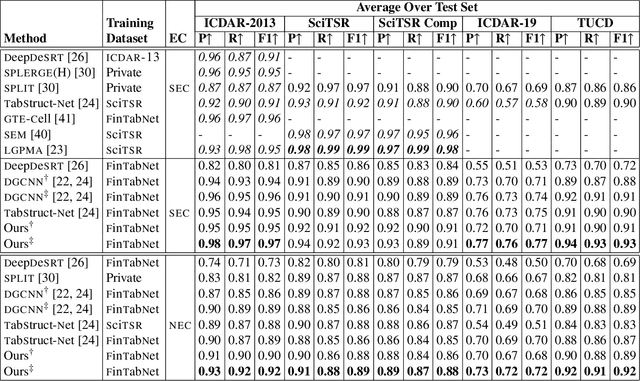Sachin Raja
Visual Understanding of Complex Table Structures from Document Images
Nov 13, 2021



Abstract:Table structure recognition is necessary for a comprehensive understanding of documents. Tables in unstructured business documents are tough to parse due to the high diversity of layouts, varying alignments of contents, and the presence of empty cells. The problem is particularly difficult because of challenges in identifying individual cells using visual or linguistic contexts or both. Accurate detection of table cells (including empty cells) simplifies structure extraction and hence, it becomes the prime focus of our work. We propose a novel object-detection-based deep model that captures the inherent alignments of cells within tables and is fine-tuned for fast optimization. Despite accurate detection of cells, recognizing structures for dense tables may still be challenging because of difficulties in capturing long-range row/column dependencies in presence of multi-row/column spanning cells. Therefore, we also aim to improve structure recognition by deducing a novel rectilinear graph-based formulation. From a semantics perspective, we highlight the significance of empty cells in a table. To take these cells into account, we suggest an enhancement to a popular evaluation criterion. Finally, we introduce a modestly sized evaluation dataset with an annotation style inspired by human cognition to encourage new approaches to the problem. Our framework improves the previous state-of-the-art performance by a 2.7% average F1-score on benchmark datasets.
Table Structure Recognition using Top-Down and Bottom-Up Cues
Oct 09, 2020



Abstract:Tables are information-rich structured objects in document images. While significant work has been done in localizing tables as graphic objects in document images, only limited attempts exist on table structure recognition. Most existing literature on structure recognition depends on extraction of meta-features from the PDF document or on the optical character recognition (OCR) models to extract low-level layout features from the image. However, these methods fail to generalize well because of the absence of meta-features or errors made by the OCR when there is a significant variance in table layouts and text organization. In our work, we focus on tables that have complex structures, dense content, and varying layouts with no dependency on meta-features and/or OCR. We present an approach for table structure recognition that combines cell detection and interaction modules to localize the cells and predict their row and column associations with other detected cells. We incorporate structural constraints as additional differential components to the loss function for cell detection. We empirically validate our method on the publicly available real-world datasets - ICDAR-2013, ICDAR-2019 (cTDaR) archival, UNLV, SciTSR, SciTSR-COMP, TableBank, and PubTabNet. Our attempt opens up a new direction for table structure recognition by combining top-down (table cells detection) and bottom-up (structure recognition) cues in visually understanding the tables.
 Add to Chrome
Add to Chrome Add to Firefox
Add to Firefox Add to Edge
Add to Edge